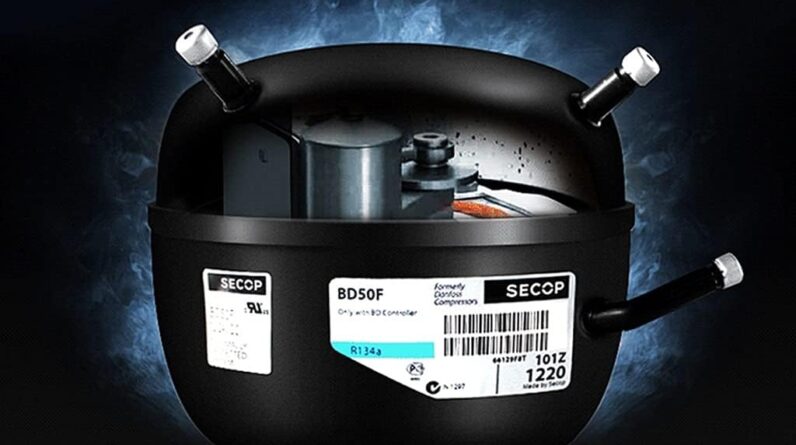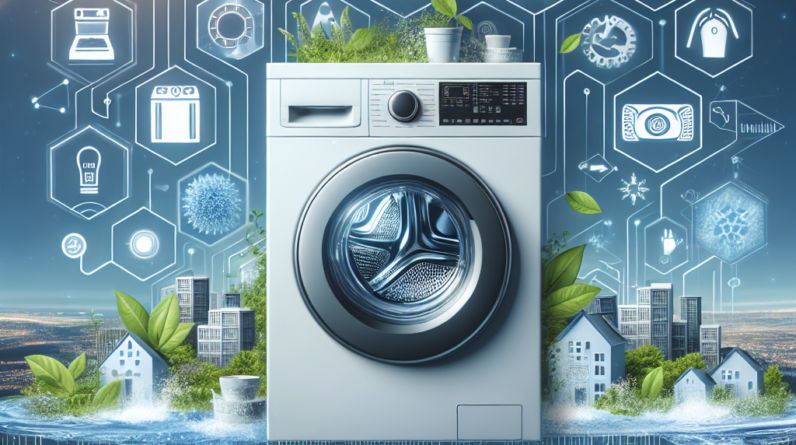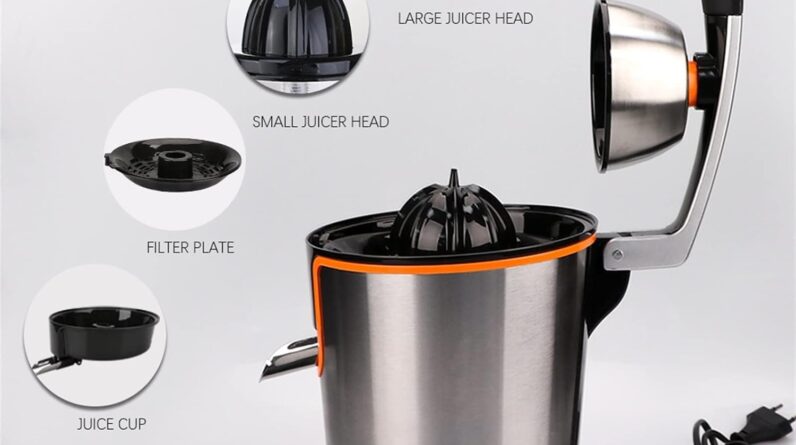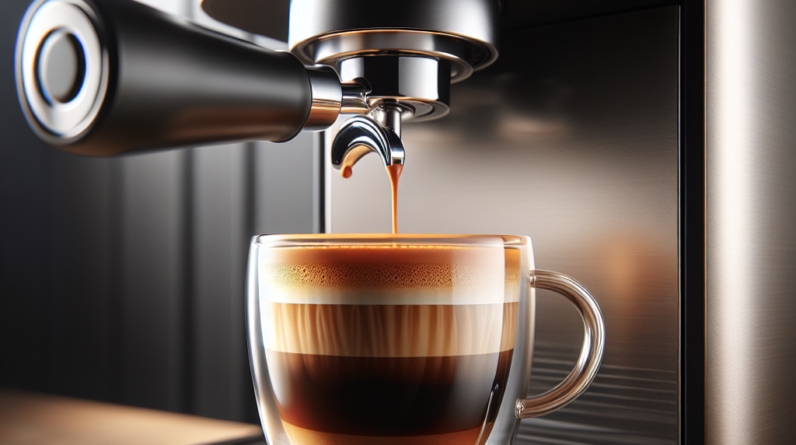
Having a dishwasher that fails to clean your dishes can be frustrating, but don’t worry! In this article, you will find easy-to-follow steps on how to troubleshoot and fix a dishwasher that isn’t cleaning dishes. Whether it’s food residue, cloudy glassware, or unclean cutlery, we’ve got you covered with practical solutions to help you restore the sparkling shine to your tableware. So let’s roll up our sleeves and get ready to tackle this common kitchen dilemma!

This image is property of i.ytimg.com.
Check the Water Supply
Check the Water Valve
The first step in troubleshooting a dishwasher that isn’t cleaning dishes properly is to check the water supply. Make sure that the water valve supplying water to the dishwasher is fully open. Sometimes, this valve can accidentally get closed, causing a decrease in water flow to the dishwasher. By ensuring that the water valve is open, you can guarantee that an adequate amount of water will reach the dishwasher during the cleaning cycle.
Inspect the Water Inlet Tube
Another potential issue with the water supply could be a blocked or kinked water inlet tube. Take a moment to inspect the water inlet tube, which is responsible for carrying water from the valve to the dishwasher. Look for any visible signs of damage, such as cracks or leaks. Additionally, ensure that the tube is not twisted or obstructed in any way. A clear and unobstructed water inlet tube is essential for proper water flow and efficient dishwasher operation.
Ensure Adequate Water Pressure
In addition to checking the water valve and inlet tube, it’s essential to ensure that your dishwasher has adequate water pressure for effective cleaning. Low water pressure can lead to unsatisfactory results, as the water may not reach all the dishes or rinse away food particles effectively. If you suspect low water pressure, it could be due to various factors, including blockages in the water supply line or a malfunctioning water pressure regulator. Consider consulting a professional plumber to address any potential water pressure issues and optimize your dishwasher’s performance.
Verify Proper Loading
Load Dishes Correctly
Properly loading your dishwasher is crucial in ensuring that your dishes come out clean after every cycle. When loading your dishwasher, make sure to follow the manufacturer’s guidelines and arrange the dishes appropriately. Avoid overcrowding the dishwasher, as this can prevent proper water circulation and spray action, leading to ineffective cleaning. Aim to space out the dishes and ensure that they are securely placed in the designated racks and compartments. By loading your dishwasher correctly, you can achieve optimal cleaning results.
Avoid Overloading the Dishwasher
While it may be tempting to fit as many dishes as possible into a single dishwasher load, overloading the dishwasher can negatively impact its performance. Overcrowding the dishwasher can prevent the water and detergent from reaching all the dishes, resulting in inadequate cleaning. It can also obstruct the spray arms, leading to blockages and uneven distribution of water. To avoid these issues, resist the urge to overload your dishwasher and prioritize quality over quantity. Instead, consider spreading larger loads across multiple cycles to ensure thorough and effective cleaning.
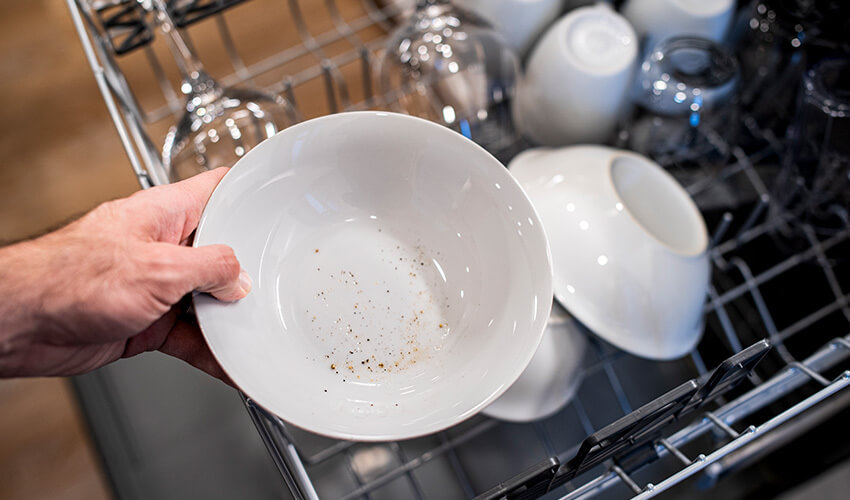
This image is property of www.mrappliance.com.
Ensure Proper Detergent Usage
Use the Right Detergent
Using the appropriate dishwasher detergent is essential for achieving clean and spotless dishes. Selecting a detergent specifically designed for use in dishwashers is crucial, as regular hand dishwashing detergents can create excessive suds and lead to poor cleaning performance. Look for dishwasher detergents that are phosphate-free, as this ingredient is known to be harmful to the environment. Refer to the dishwasher’s user manual or consult the manufacturer’s recommendations to determine the most suitable detergent for your dishwasher model.
Check Detergent Quantity
In addition to using the right detergent, it’s important to ensure that you’re using the correct amount. Using too little detergent can result in ineffective cleaning, while using too much can lead to excessive suds and residue on the dishes. Follow the manufacturer’s guidelines regarding the recommended detergent quantity for your specific dishwasher model. Factors such as water hardness and soil level may require adjustments to the detergent amount. Experiment with different quantities to find the perfect balance for optimal cleaning performance.
Prevent Detergent Dispenser Issues
If you notice that your dishes are not getting clean, it’s possible that there may be an issue with the detergent dispenser. Ensure that the dispenser is not blocked or clogged with detergent residue, as this can prevent the proper release of detergent during the cleaning cycle. Clean the dispenser regularly and remove any hardened detergent buildup that may hinder its functionality. If the dispenser is damaged or faulty, it may need to be replaced to ensure proper detergent distribution and improve cleaning results.
Examine Spray Arms
Clean the Spray Arms
The spray arms in your dishwasher play a vital role in ensuring thorough and even water distribution during the cleaning cycle. Over time, mineral deposits, food particles, and other debris can accumulate on the spray arms, obstructing the water flow and reducing their effectiveness. Regularly inspect and clean the spray arms to remove any buildup. Use a soft brush and warm soapy water to gently scrub away any residue or blockages. Ensure that the spray arm nozzles are clear and free from obstructions to guarantee proper water distribution and optimal cleaning performance.
Inspect for Damage or Clogs
In addition to cleaning the spray arms, it’s important to inspect them for any signs of damage or clogs. Check for cracks, chips, or bent arms that may affect their ability to rotate and spray water effectively. If you notice any damage, it’s crucial to replace the faulty spray arm to maintain the dishwasher’s cleaning efficiency. Additionally, verify that the spray arm’s connection points are secure and properly aligned with the water supply. Any loose connections can result in decreased water pressure and subpar cleaning results.

This image is property of itisfixed.com.
Inspect Filters and Drain
Clean the Filters
Filters in dishwashers are responsible for trapping food particles, debris, and other contaminants during the cleaning process. Over time, these filters can become clogged and hinder the dishwasher’s performance. Regularly clean the filters to remove any accumulated residue. Begin by removing the filter assembly according to the user manual’s instructions. Rinse the filters under warm running water to dislodge any debris. For stubborn buildup, use a soft brush to gently scrub away residue. Once clean, reinstall the filters securely to ensure optimal cleaning and prevent potential drainage issues.
Check the Drain for Debris
A clogged or obstructed drain can result in water not properly draining from the dishwasher, leading to unclean dishes and potential leaks. Inspect the dishwasher drain for any debris or blockages. Remove the dishwasher’s bottom rack and locate the drain located at the dishwasher’s base. Using a flashlight, visually check for any visible obstructions, such as food particles or foreign objects. If you detect any blockages, remove them carefully using a pair of tweezers or a plastic utensil. Regularly maintaining a clear dishwasher drain can help prevent drainage issues and promote effective cleaning.
Test Heating Element
Check for Electrical Issues
The heating element in a dishwasher is responsible for maintaining the water temperature throughout the cleaning cycle. If your dishes are not getting clean, it’s possible that there may be an issue with the dishwasher’s heating element. Begin by checking for any electrical issues that may be affecting its functionality. Ensure that the dishwasher is properly connected to a power source and that the circuit breaker or fuse for the dishwasher is not tripped. If you suspect an electrical problem, consult a qualified technician to assess and address the issue safely.
Ensure Proper Heating Function
In addition to checking for electrical issues, it’s important to verify the heating element’s functionality. Run a cycle and monitor whether the water is reaching the desired temperature. If the water is not heating adequately, it could indicate a faulty or malfunctioning heating element. Consult the dishwasher’s user manual for instructions on how to test the heating element’s resistance or consider seeking professional assistance. A properly functioning heating element is crucial in ensuring optimal cleaning performance and sanitization of your dishes.
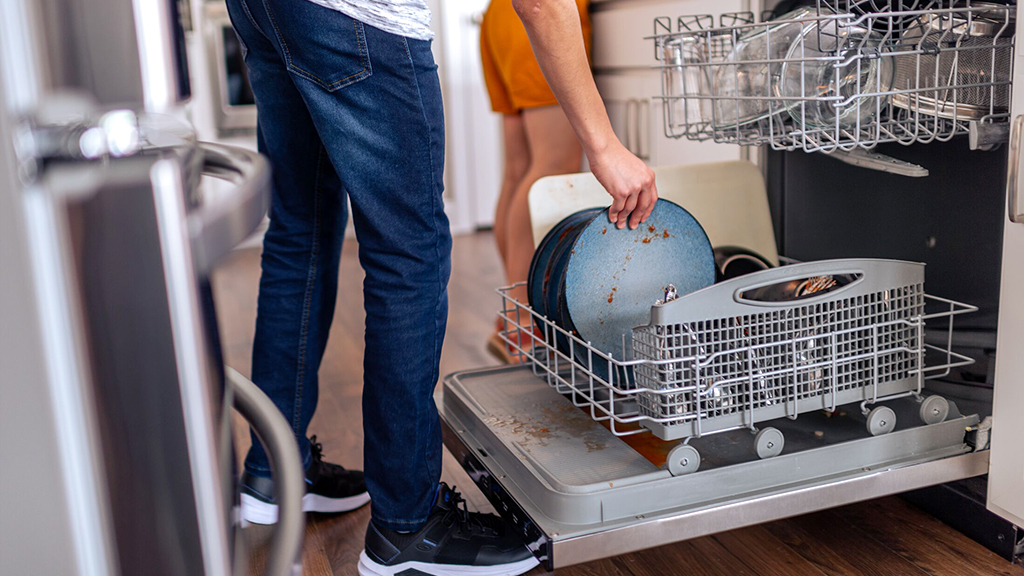
This image is property of images.ctfassets.net.
Evaluate Wash Cycles and Options
Choose the Correct Wash Cycle
Dishwashers offer a variety of wash cycles tailored to different cleaning needs. To troubleshoot dishes not getting clean, review the available wash cycles and select the most appropriate one for your specific load. Lighter soiled dishes may require a shorter or less intense cycle, while heavily soiled or heavily stained items may need a more robust wash cycle. Additionally, consider utilizing specialized cycles such as “Pots and Pans” or “Intensive” for tougher cleaning tasks. Always refer to the dishwasher’s user manual for guidance on selecting the most suitable wash cycle for optimal cleaning results.
Utilize Additional Options
Many dishwashers also provide additional options that can enhance cleaning performance. These options may include sanitize, extra rinse, or intensive spray features. To troubleshoot dishes not getting clean, consider utilizing these extra options to maximize cleaning effectiveness. The sanitize option, for instance, increases the water temperature during the final rinse to kill bacteria and ensure thorough sanitation. By taking advantage of these supplementary features, you can tailor the dishwasher’s settings to better suit your specific cleaning needs and achieve sparkling clean dishes.
Inspect Wash Impellers
Clean the Wash Impellers
The wash impellers in a dishwasher play a crucial role in directing water to ensure proper cleaning. Over time, these impellers can become clogged or obstructed by food particles or debris. Periodically inspect and clean the wash impellers to maintain optimal cleaning performance. Begin by removing the bottom rack and locating the wash impellers. Gently rotate them to check for smooth movement and ensure they are not jammed. If you notice any residue or blockages, clean the impellers using a soft brush or cloth, removing any debris carefully. Keeping the wash impellers clean and functional is essential for efficient and effective dishwashing.
Check for Damaged Impellers
In addition to cleaning the wash impellers, it’s essential to inspect them for any signs of damage. Look for cracked or chipped blades, as these can impact their ability to distribute water evenly. Damaged impellers may cause uneven washing, leaving some dishes less clean than others. If you detect any issues with the impellers, consider replacing them to restore optimal cleaning performance. Contact the dishwasher manufacturer or a professional technician for guidance on obtaining and installing the correct replacement impellers for your dishwasher model.
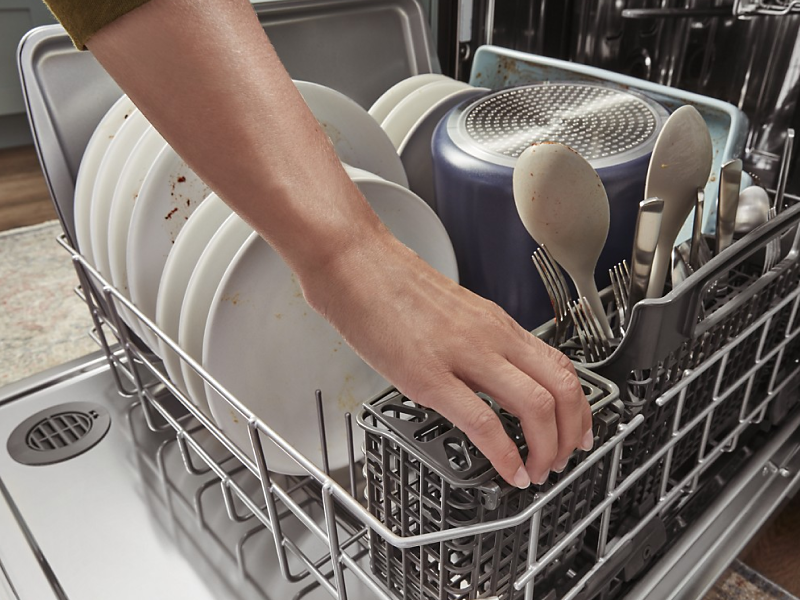
This image is property of kitchenaid-h.assetsadobe.com.
Examine the Water Hardness
Adjust Water Softener Settings
Water hardness can significantly impact the efficiency of your dishwasher. Hard water contains minerals that can leave spots, residue, and film on dishes, affecting their cleanliness. If you suspect that your water is hard, consider adjusting the water softener settings on your dishwasher. Consult your dishwasher’s user manual or the manufacturer’s recommendations to adjust the water softener according to your water’s hardness level. Ensuring that your dishwasher is properly set to handle hard water can help eliminate mineral deposits and improve the overall cleaning performance.
Consider Using Rinse Aid
In addition to adjusting the water softener settings, consider incorporating a rinse aid into your dishwasher routine. Rinse aids help to prevent water spots and promote better drying by reducing the surface tension of the water. They also aid in preventing mineral deposits from adhering to dishes and glassware during the cleaning process. Follow the manufacturer’s instructions on the correct quantity and usage of the rinse aid. Regularly replenishing the rinse aid can help achieve spotless and streak-free dishes, even in areas with hard water.
Check for Malfunctioning Components
Test the Pump Motor
A malfunctioning pump motor can significantly impact the cleaning performance of a dishwasher. If your dishes are not getting clean, it’s important to test the pump motor for any issues. Start by inspecting the pump motor for visible signs of damage or blockages. Remove any debris that may obstruct the motor’s movement. If you suspect a larger issue, such as a faulty motor or a broken impeller, consult a professional dishwasher repair technician. They will be equipped to diagnose and address any pump motor problems to ensure proper water circulation and effective dishwashing.
Inspect the Float Switch
The float switch is a safety feature in dishwashers that prevents overfilling. If the float switch is malfunctioning, it can disrupt the water flow and impact the dishwasher’s cleaning performance. Inspect the float switch for any visible damage or blockages. Ensure that it moves freely up and down as water levels change. If the float switch appears to be stuck, clean it carefully and remove any debris that may be obstructing its movement. If the float switch continues to malfunction, it may require professional attention to correct the issue and restore optimal dishwasher performance.
Evaluate the Timer or Control Board
If all other troubleshooting steps have been taken and your dishes are still not getting clean, it may be necessary to evaluate the dishwasher’s timer or control board. These components are responsible for regulating and coordinating the various functions of the dishwasher. If they are malfunctioning, it can result in improper water circulation, insufficient detergent distribution, or incomplete cleaning cycles. Consider consulting a professional technician who specializes in dishwasher repair to assess and potentially replace these components. Proper functioning of the timer or control board is crucial for achieving clean and sanitized dishes with every dishwasher load.
By following these comprehensive steps for troubleshooting a dishwasher that isn’t cleaning dishes properly, you can identify and address the underlying issues affecting its performance. By checking the water supply, ensuring proper loading, using the right detergent, inspecting spray arms, cleaning filters and drains, testing the heating element, evaluating wash cycles, examining wash impellers, addressing water hardness, and checking for malfunctioning components, you’ll be well-equipped to resolve any problems and enjoy sparkling clean dishes from your dishwasher once again.


